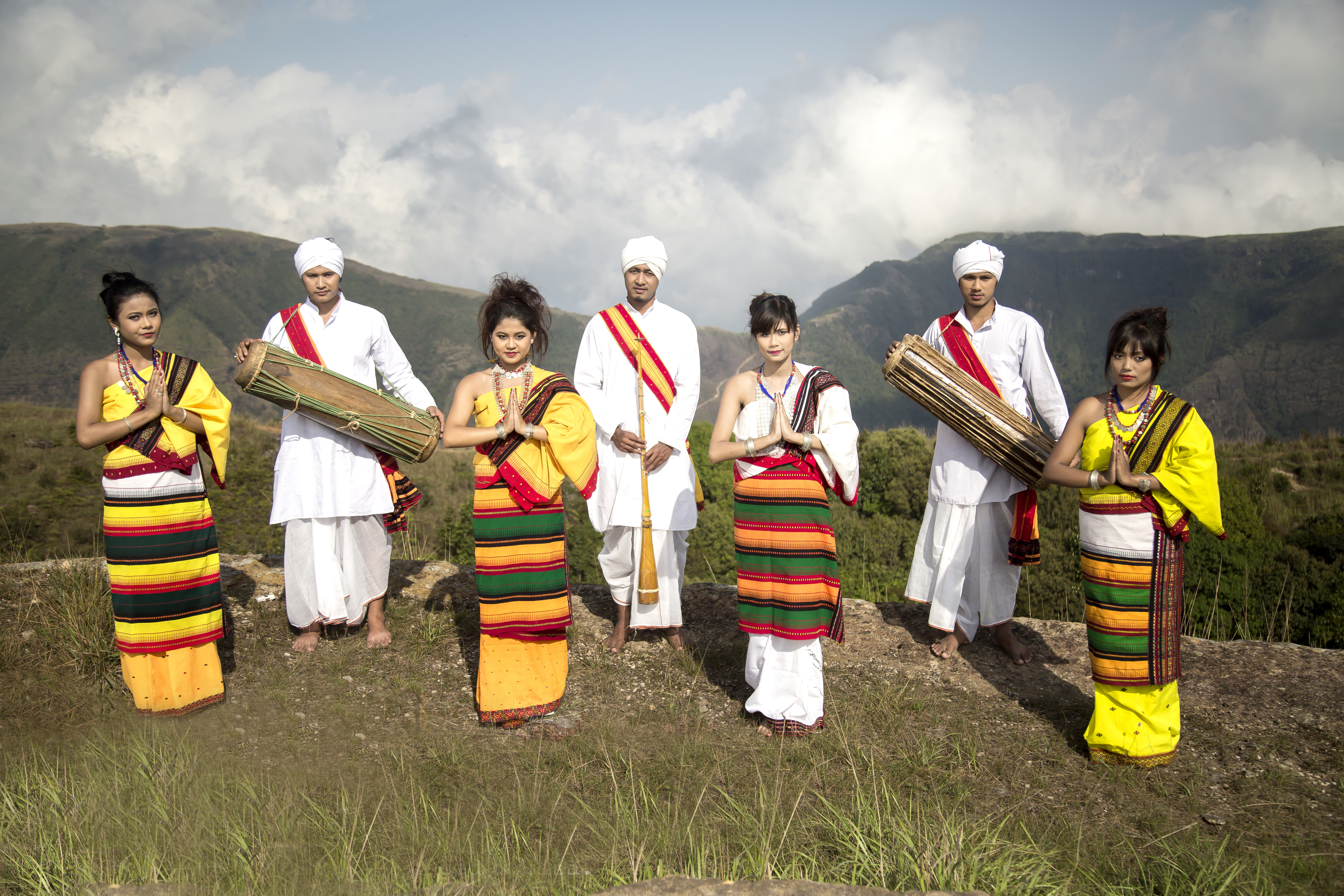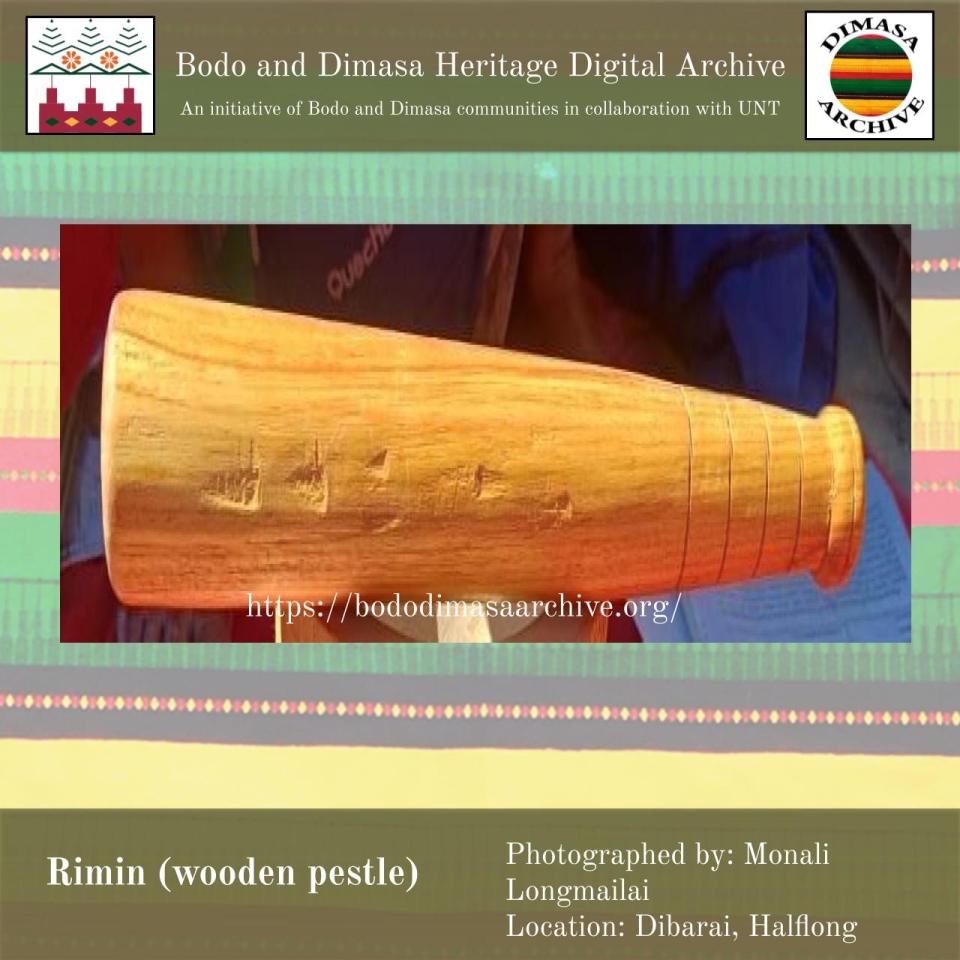Dimasa

The Dimasa (known as Kachari in history) are one of the oldest living tribes of Northeast India with a kingdom and its rich history of 800 years (11th to 19th century). The word Dimasa means "son of the great river" where di means "water", ma means "big" and sa means "son". Presently, with a population of approximately 1.5-2 lakhs in northeast India, they are found in the four regions, namely, Cachar, Karimganj and Hailakandi in Barak valley (Hawar), Dima Hasao (Hasao), Hojai and Lanka (Demra), East Karbi Anglong in Assam and Dimapur in Nagaland (Dijuwa). There are several dialects of the language, such as Hasao, Hawar, Dembra, and Dijuwa, of which Hasao is adopted as standard dialect since 2004 by Dimasa Sahitya Sabha. Dimasa is a Bodo-Garo language from the Tibeto-Burman language family and is a vulnerably endangered language because of limited use except for in the home and intra social gathering. The archive thus documents folk genres, livelihood, and culture and traditions of the Dimasa and the language to protect and preserve the living practices of the people as well as the language for future generations.
Dimasa (jarmin ha Kachari thihi mithijaoyaba) sainklip sainja Bahrat ha maithaijang raja-jai maithaisagangha (Raja-jiseniprang Rajaji-sugukhara maithai) dongjen-phaiyaba jadituni bisingha jadisi: Dimapurniphrang Maibang, Khaspurniphrang Harithikar Rajathanisosi dongjenyarao. Dimasa nigrao jakha, Dima ni basa; eraha di nigrao jaka di, ma nigrao jakha guwar, sa nigrao jakha basa. Duha sainklip sainja Bharat ha kribjang, lakh sigejerniphrang lakh gni lei jonkhrojadu. Assam ni Kolongma haphai-Cachar, Karimganj, Hailakhandi (Hawar); Dima Hasao (Hasao); Hojai ode Lanka (Demra), Karbi Anglong ode Nagaland ni Dimapur (Dijuwa) ha dongyarao jadu. Ebo haphai Hawar, Hasao, Demra, Dijuwabutuha Dima graojoba sainlaibaha grao-birili kaisa gibin gibin jadu; tikabo Dimasa Sahitya Sabha (Dimasa Lairidim Mel) lailangyaba rijingni maithaibriniprang Dima Hasao ha sailai-songyaba Dima graokhening khatiktik jadaotihi ajaopabulaidu. Dima graola Bodo jang Garo jadinigrao bosongse; Tibeto-Burman ma-graose ode gibin gibin hathaniha isi sainlaiyayaba, nohkor, somaj-haprai, melsaha kaisa hafaibutuhasining sainlai songyaba magraose. Odebani elei kaisa haphaiha sining sainlaiyaba Dima graokhe, jadinigainsari-pinsari, jharmin-kharmin, baithai-luthai, dongthai-jithai-solithai edebasi yaowaisonghi solilaiba jagabdaorihima thangpinma odejang phaiginyaba kharani basainha boyaowaiba thangdaohi jagabdaorine jadini magrao, gainsari-pinsari, jharmin-kharmin, edebasi ragao ragao haprangmairipumane document laijab rebkhuhi danghi gejebkhu thatimane habasongpalangdu.
Photography by: Dipankar Mech
Makeup: Nihar Ranjan Goswami
Costume Designer: Debina Bathari/Ponjit Sorongphang
Models: Barbie, Paishringdi Niha, Liana, Dhoniraj, Sarporaj, Sonob
Photography project under the guidance of Zed Nunisa
If you have questions about anything related to the Dimasa materials on this archive, or how you could join the Dimasa archive team, please send an email to archivedimasa@gmail.com.


